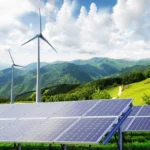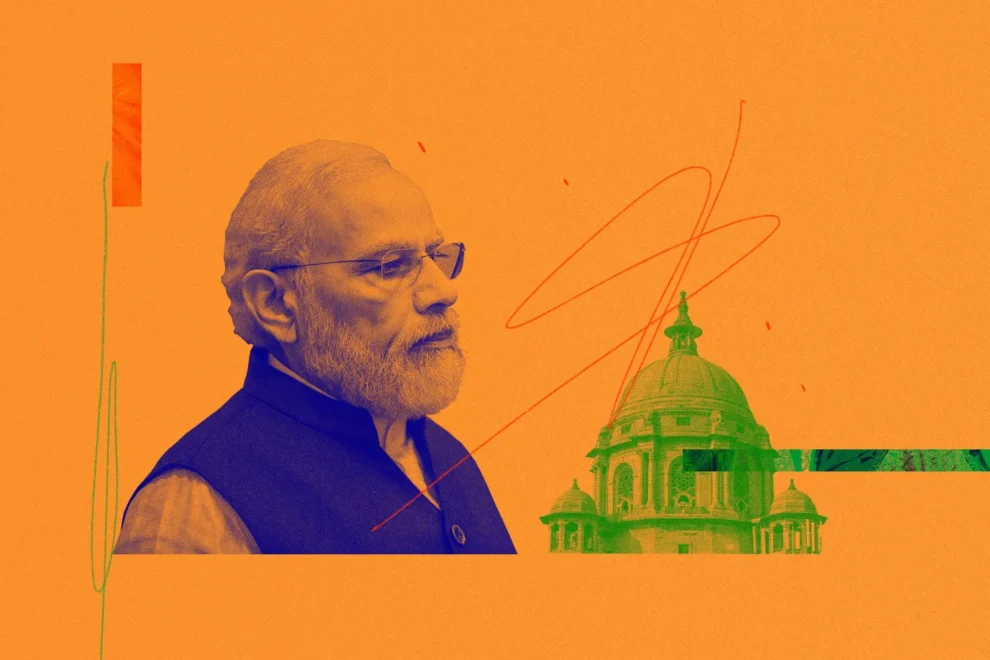U.S. officials have been working to develop closer ties with India’s leaders
With nearly 1.4 billion inhabitants, India has become the most populous country in the world, according to the United Nations — a title it just took from China, which had held the top position for 73 years.
While visiting New Delhi, this isn’t hard to believe. The city has roughly 30 million residents, and you feel like you’re bumping into all of them at once while driving through the busy bazaars.
Less than four miles away from one of those markets sits Indian Prime Minister Narendra Modi’s official residence, Rashtrapati Bhavan, which claims another record — the world’s largest presidential house.

And add yet another record to this list: India is the world’s largest democracy, modeled after the British Westminster system. It is also nuclear-armed and part of the nonaligned movement, which grew out of a Cold War determination not to pick sides between the U.S. and Russia.
And add yet another record to this list: India is the world’s largest democracy, modeled after the British Westminster system. It is also nuclear-armed and part of the nonaligned movement, which grew out of a Cold War determination not to pick sides between the U.S. and Russia.
India has one of the fastest growing economies in the world, with its own version of Silicon Valley employing an increasingly well-trained and English-speaking workforce. The country has ramped up its manufacturing industry, spawning the possible era of “Made in India” iPhones. It also extends its cultural influence through Bollywood, a film industry that contributes billions of dollars to the country’s GDP.
But India’s prized possession is perhaps its diversity — with a population that speaks over a hundred different languages and practices many different religions and regional customs. To ensure peaceful coexistence among the different subcultures, the Indian Constitution separates religion from the state and does not prioritize one religion over another.
But India’s history has plenty of examples of politicians from prominent parties who capitalized on religious differences for political gain, blurring the line between religion and state, according to the Carnegie Endowment of International Peace.
Modi has received scrutiny for increasing nationalism in the country, among other criticisms cited by international nongovernmental organizations like Human Rights Watch. But while Modi’s party is closely associated with Hindus, he hasn’t shied away from embracing India’s Muslim and Christian minorities as well. In an address to his party’s workers in January, he said the message should be of cooperation between all states and their cultures.
Part of his pitch to voters has been a pro-business agenda and the promise of economic growth, which has played a role in making him the fourth longest-serving prime minister in the country’s history. The question for the United States is how to engage with a nation that may rapidly become one the world’s most important, but often overlooked superpowers.

The India-U.S. relationship
There was some recent frustration in India over delays by lawmakers in Washington, D.C., to fill the role of the U.S. ambassador. President Joe Biden appointed former Los Angeles mayor Eric Garcetti, but it took two years to get him from the nomination to being sworn in because of allegations he covered for a staffer accused of sexual harassment.
Garcetti angered some Indian officials when he said at his confirmation hearing in 2021 that he would “actively raise” human rights issues in New Delhi.
A former member of parliament, who is aligned with Modi, called Garcetti’s remarks “ignorant” and the vice president of a youth organization said it could fuel “anti-West sentiment” in India, according to Time Magazine.
More recently, at Biden’s “Summit for Democracy,” Modi touted India as the “mother of democracy,” citing the successful vaccination program against COVID-19.
“There is much to say about the virtues of democracy, but let me say just this: India, despite the many global challenges, is the fastest growing major economy today. This itself is the best advertisement for democracy in the world. This itself says that democracy can deliver,” he said.
His recent moves have gotten some attention from American officials. As I previously reported for the Deseret News, Modi welcomed the U.S. Commerce Secretary Gina Raimondo to New Delhi in March. When recounting her trip, Raimondo deployed language signaling the administration’s support, hailing Modi as a “visionary” who desires to “move India forward as a global power.”

More recently, Apple CEO Tim Cook met Modi and pledged to make more investments in the country.
“From education and developers to manufacturing and the environment, we’re committed to growing and investing across the country,” Cook said on Twitter following the meeting.
But rising inflation and unemployment challenge this narrative of positive growth. When comparing China’s economic growth to India’s, while both are emerging economies in with large populations, India’s gross domestic product is $3.1 trillion while China’s is $17.7 trillion.
Reports indicate that Modi and Biden are set to meet in late May in Papua New Guinea and Australia at the Pacific Islands Forum.
Secretary of the Treasury Janet L. Yellen peeled the curtain back on the future of Washington’s relationship with India during her visit there in 2022.
“Deepening our bilateral ties will reap significant economic benefits for both of our nations,” Yellen said, while noting challenges to the global economy like the pandemic, the war in Ukraine and climate change.
“In a world where supply chain vulnerabilities can impose heavy costs, we believe it’s important to strengthen our trade ties with India,” which considers the U.S. its biggest trading partner, Yellen added.
She pointed to the investments in India by big American companies like Apple and Google.
Additionally, the U.S. plans to help India’s local industries grow while supporting “Modi’s renewable energy ambitions,” Yellen said.
Biden will likely raise trade and investment issues with Modi when they meet later this month.
Source : Deseret News
















